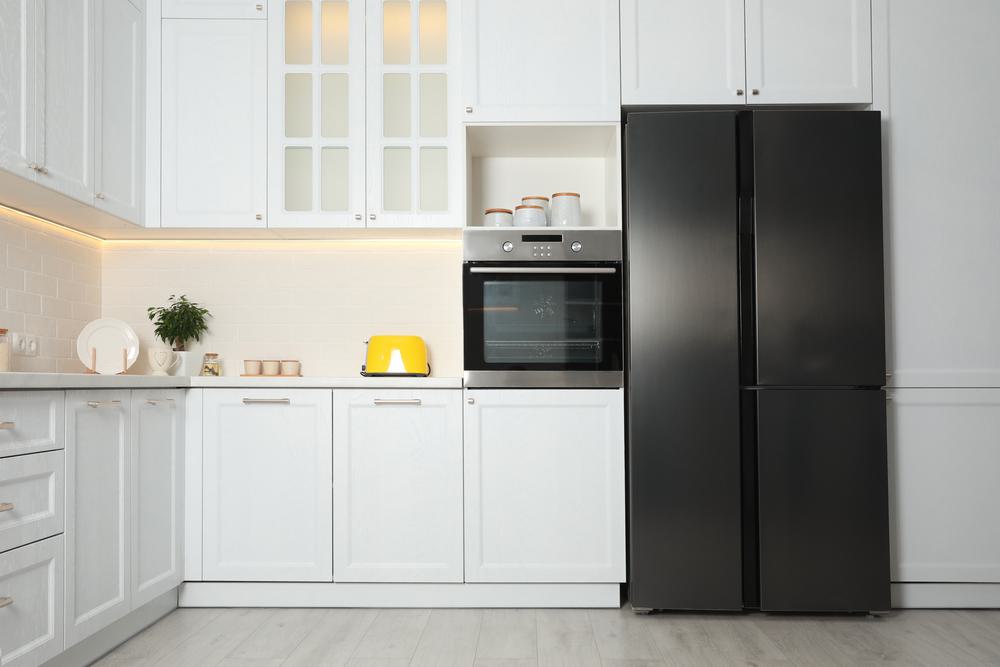
Your refrigerator is an essential appliance in your kitchen, but what do you do when it starts to move every time you open the door? Not only can a moving fridge be frustrating, but it can also lead to potential hazards and damage. In this comprehensive guide, we’ll walk you through the steps you can take to stop your fridge from moving when you open the door.
To stop your fridge from moving when you open the door, first ensure that your fridge is properly leveled using its adjustable feet or rollers. If it still moves, increase the friction between the fridge and the floor using non-slip mats, rubber pads, or furniture coasters. You can also secure the fridge to the wall or cabinets using brackets or straps. Lastly, if your fridge model allows, adjust the door’s swing radius to prevent it from hitting the wall or cabinets. If these solutions don’t work, consider seeking professional help.
Why Does Your Fridge Move When You Open the Door?
There are several reasons why a refrigerator might move when the door is opened. Some of the most common reasons include:
- Uneven or sloping floor: If the floor under the fridge is uneven, it could cause the appliance to tilt and move when the door is opened.
- Worn or damaged feet: The feet of the fridge can become worn down or damaged, making it more prone to movement.
- Lack of friction: A smooth floor can cause the fridge to move when the door is opened due to insufficient friction between the feet of the fridge and the floor.
- Improper leveling: If the refrigerator is not leveled properly, it may move when the door is opened.
Potential Hazards and Damages Caused by a Moving Fridge
A moving refrigerator can potentially cause several hazards or damages. These include:
- Leaking: Refrigerators can leak coolant or water during the moving process, which can damage floors or other items in the moving truck.
- Mold or mildew: If the refrigerator is not properly cleaned and dried before moving, it can collect mold or mildew.
- Damage to floors and walls: Moving a refrigerator can scratch or dent floors and walls if not handled carefully.
- Internal damage: Laying a refrigerator on its side or back can cause damage to its internal parts, such as the compressor or cooling lines. This can lead to permanent damage to the refrigerator’s ability to cool.
How to Stop Your Fridge from Moving
Here are some simple and effective solutions you can implement to stop your fridge from moving:
- Level the refrigerator: Most refrigerators come with adjustable feet or rollers at the front. You can adjust these to ensure your fridge is properly leveled. This will help stabilize the appliance and prevent it from moving when the door is opened.
- Use friction-enhancing materials: Place non-slip mats, rubber pads, or furniture coasters under the wheels or rollers to increase friction between the fridge and the floor. This will prevent the fridge from sliding when the door is opened.
- Secure the fridge to the wall or cabinets: If your fridge is still moving despite leveling and using friction-enhancing materials, consider securing it to the wall or cabinets using brackets or straps. However, this may not be suitable for all types of fridges or countertops, especially if you have marble countertops.
- Adjust the door’s swing radius: Some refrigerator models allow you to adjust the door’s swing radius to prevent it from hitting the wall or cabinets. Check your fridge’s user manual or contact the manufacturer for more information on this feature.
Remember to re-level the refrigerator after applying any of these solutions, if necessary.
Professional Help
If none of the DIY solutions work, it may be time to consult a professional. They can help identify the cause of the problem and provide the necessary solutions. Additionally, if your fridge is still under warranty, it might be worth reaching out to the manufacturer or retailer for assistance.
Conclusion
A moving fridge can be more than just an annoyance. It can potentially lead to damage and safety hazards. However, by understanding the reasons behind the movement and implementing the solutions provided in this guide, you can effectively stop your fridge from moving when you open the door.
Frequently Asked Questions
Can I use any type of non-slip mat for my fridge?
Yes, you can use any type of non-slip mat as long as it can withstand the weight of the fridge and effectively increase the friction between the fridge and the floor. However, rubber mats are often recommended due to their high friction and durability.
My fridge doesn’t have adjustable feet. What can I do?
If your fridge doesn’t have adjustable feet, you can use shims or wedges to level it. Place the shims or wedges under the non-adjustable feet until the fridge is leveled. Remember to check the levelness using a spirit level.
How often should I check the levelness of my fridge?
It’s recommended to check the levelness of your fridge every six months or whenever you notice your fridge starting to move. This is because the weight distribution inside the fridge can change over time, causing the appliance to become unbalanced.
Is it safe to move a fridge by myself?
Moving a fridge by yourself can be risky due to its weight and size. It’s recommended to seek help from others or hire professional movers to avoid personal injury and damage to the fridge or your property.
Can I use any type of bracket or strap to secure my fridge to the wall?
It’s best to use brackets or straps that are specifically designed for securing appliances. These are usually stronger and more durable than regular brackets or straps. Make sure to follow the manufacturer’s instructions to ensure a secure installation.












